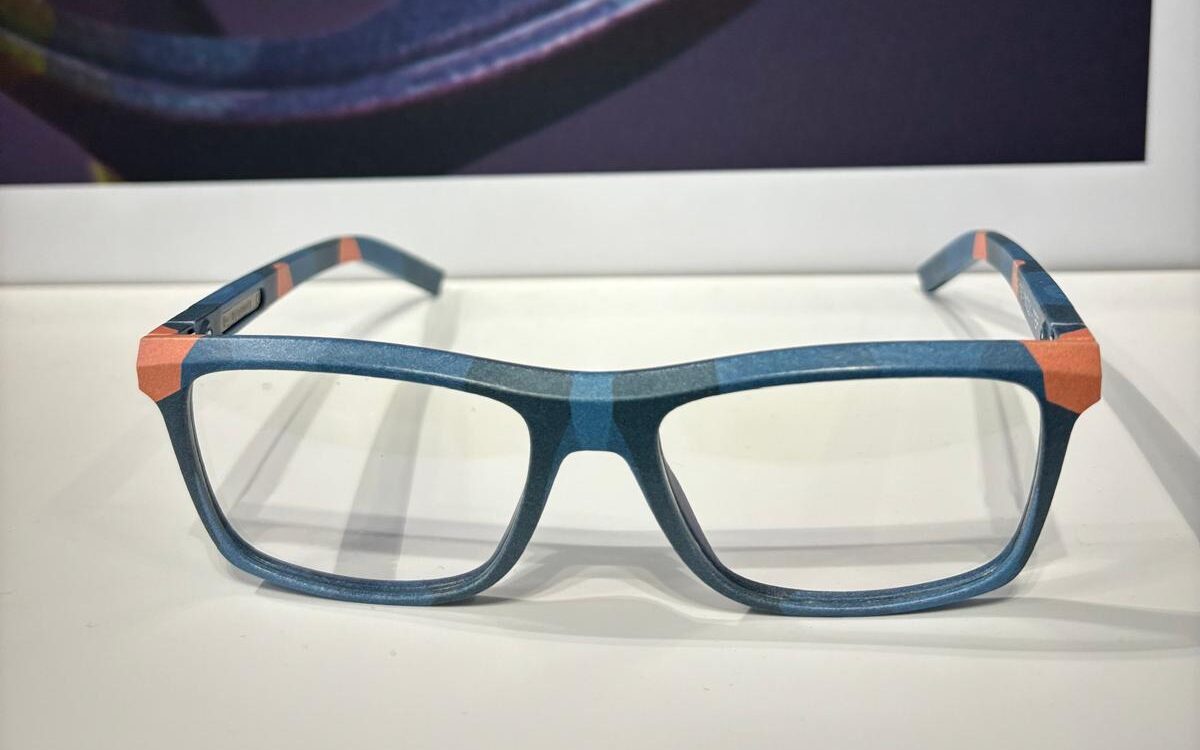The introduction of 3D printing is a viable means to manufacturing eyewear is changing the materials frames are made from. The wide range of options, each with special qualities, is driving this transformation. Let’s explore the many materials that 3D-printed eyewear may be made from:
1. Thermoplastics:
Thermoplastics are a class of materials that become pliable or moldable above a specific temperature and solidify upon cooling. They are widely used in 3D printing for their versatility and ease of use.
Material |
Properties |
Eyewear Application |
|---|---|---|
| PLA (Polylactic Acid) | Biodegradable, smooth surface finish, available in various colors | Ideal for lightweight and colorful frames |
| ABS (Acrylonitrile Butadiene Styrene) | Durable, impact-resistant, available in a variety of colors | Suitable for robust and durable eyewear designs |
2. Nylon (Polyamide):
Nylon, also known as polyamide, is a synthetic polymer known for its strength, flexibility, and durability.
Material |
Properties |
Eyewear Application |
|---|---|---|
| Nylon | Flexible, strong, long-lasting | Offers creative freedom in design, enhances wearer comfort |

Full color 3D printed nylon frame printed by TPI, designed by LIQ Eyewear from Spain.
3. Resin-based Materials:
Resin-based materials are liquid polymers that solidify when exposed to light (SLA) or heat (DLP), creating highly detailed prints.
Material |
Properties |
Eyewear Application |
|---|---|---|
| Stereolithography (SLA) Resin | High-resolution, smooth surface finish, post-processing options | Ideal for intricate eyewear designs |
| Digital Light Processing (DLP) Resin | Fast print times, accurate prints, variety of colors and transparency levels | Creates eyewear with optical effects and precision detailing |

Anne Cooper from Vision Monday wearing a resin-based frame printed live at the Vision Expo show in New York in collaboration with Genera
4. Metals:
Metal materials offer durability, strength, and a modern aesthetic to 3D printed eyewear.
Material |
Properties |
Eyewear Application |
|---|---|---|
| Titanium | Durable, lightweight, biocompatible | Used in luxury eyewear for sleek, long-lasting frames |
| Stainless Steel | Cost-effective, long-lasting, customizable | Provides durability and aesthetic appeal to eyewear designs |
5. Carbon Fiber:
Carbon fiber composites offer exceptional strength-to-weight ratio, making them ideal for high-performance eyewear.
Material |
Properties |
Eyewear Application |
|---|---|---|
| Carbon Fiber | Lightweight, strong, resistant to impact | Popular among athletes and outdoor enthusiasts for durable, futuristic frames |
The variety of materials that may be used for 3D printing eyeglasses will only increase as technology develops, opening up opportunities for sustainability, comfort, and design. Since every material has its own set of qualities, designers and producers might be creatively inspired and able to reshape the future of eyewear. Selecting the “best” material for 3D printing eyewear depends on various factors, including the specific requirements of the design, wearer preferences, durability, comfort, and aesthetics. Each material has its own set of advantages and considerations.